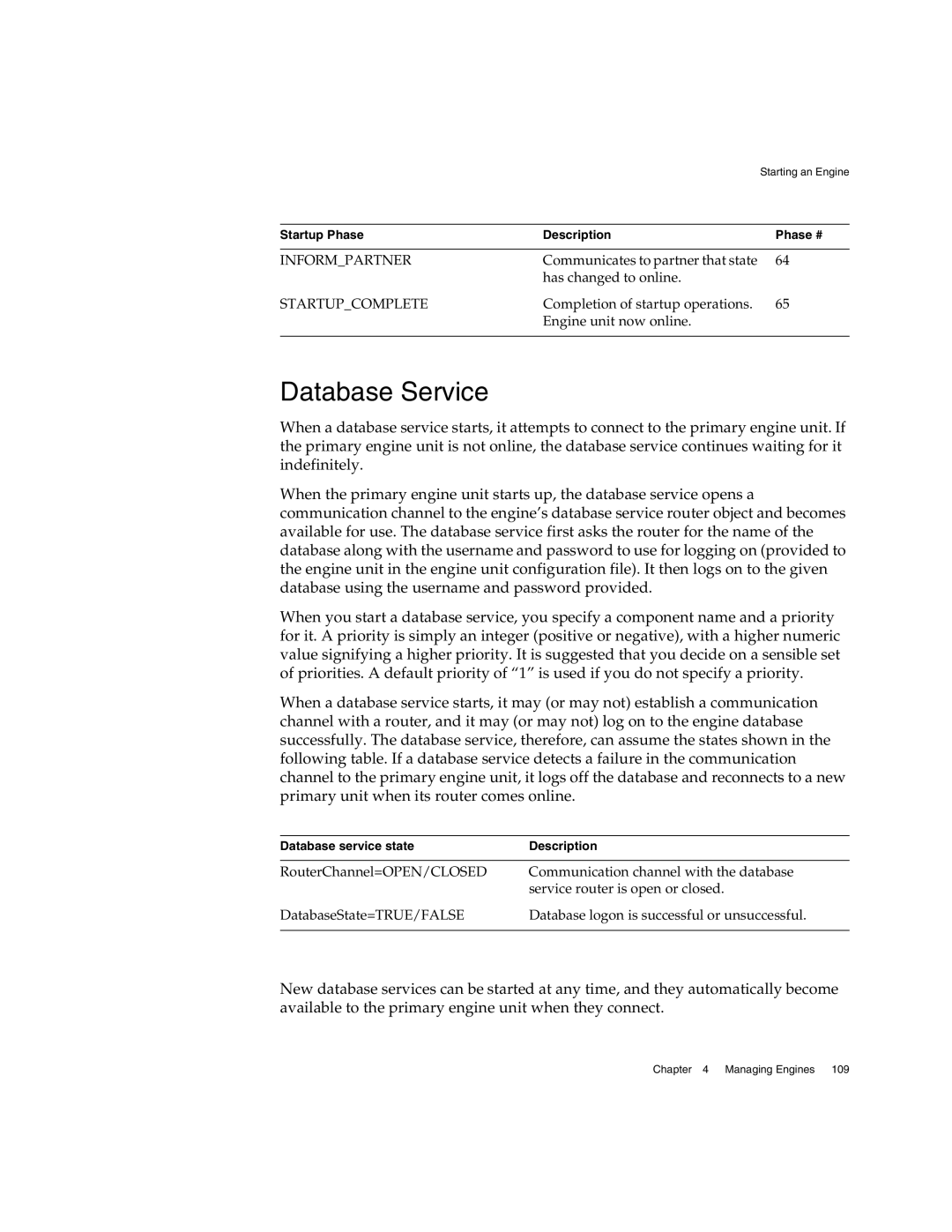|
| Starting an Engine |
|
|
|
Startup Phase | Description | Phase # |
|
|
|
INFORM_PARTNER | Communicates to partner that state | 64 |
| has changed to online. |
|
STARTUP_COMPLETE | Completion of startup operations. | 65 |
| Engine unit now online. |
|
|
|
|
Database Service
When a database service starts, it attempts to connect to the primary engine unit. If the primary engine unit is not online, the database service continues waiting for it indefinitely.
When the primary engine unit starts up, the database service opens a communication channel to the engine’s database service router object and becomes available for use. The database service first asks the router for the name of the database along with the username and password to use for logging on (provided to the engine unit in the engine unit configuration file). It then logs on to the given database using the username and password provided.
When you start a database service, you specify a component name and a priority for it. A priority is simply an integer (positive or negative), with a higher numeric value signifying a higher priority. It is suggested that you decide on a sensible set of priorities. A default priority of “1” is used if you do not specify a priority.
When a database service starts, it may (or may not) establish a communication channel with a router, and it may (or may not) log on to the engine database successfully. The database service, therefore, can assume the states shown in the following table. If a database service detects a failure in the communication channel to the primary engine unit, it logs off the database and reconnects to a new primary unit when its router comes online.
Database service state | Description |
|
|
RouterChannel=OPEN/CLOSED | Communication channel with the database |
| service router is open or closed. |
DatabaseState=TRUE/FALSE | Database logon is successful or unsuccessful. |
|
|
New database services can be started at any time, and they automatically become available to the primary engine unit when they connect.
Chapter 4 Managing Engines 109
